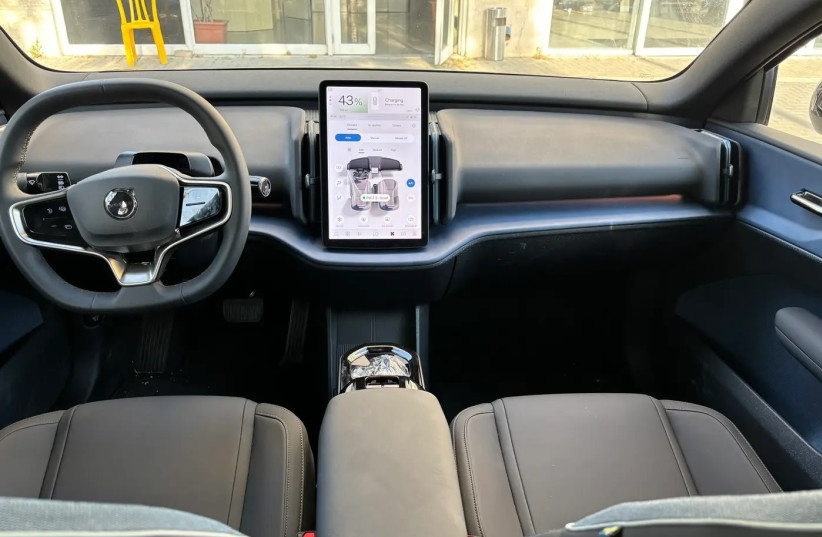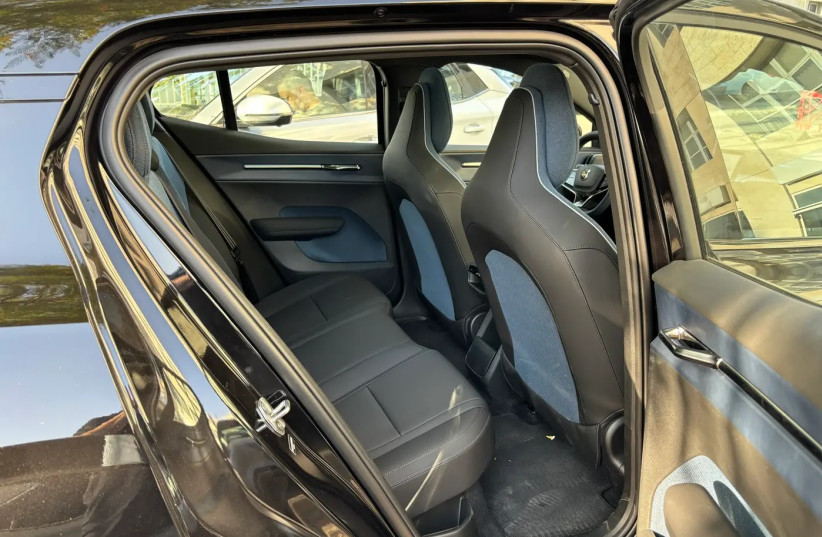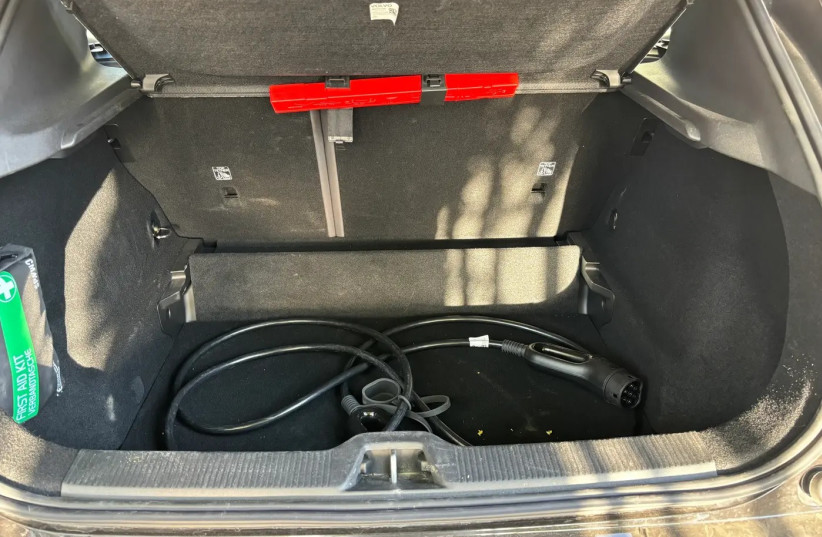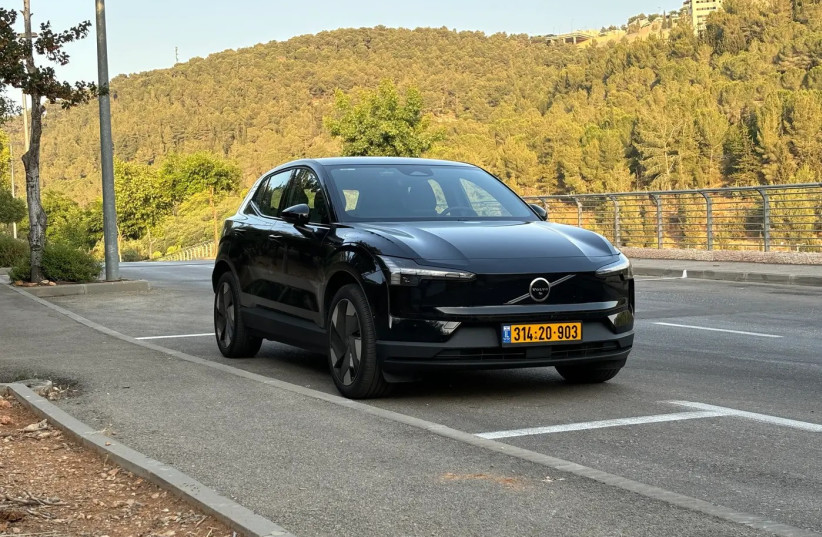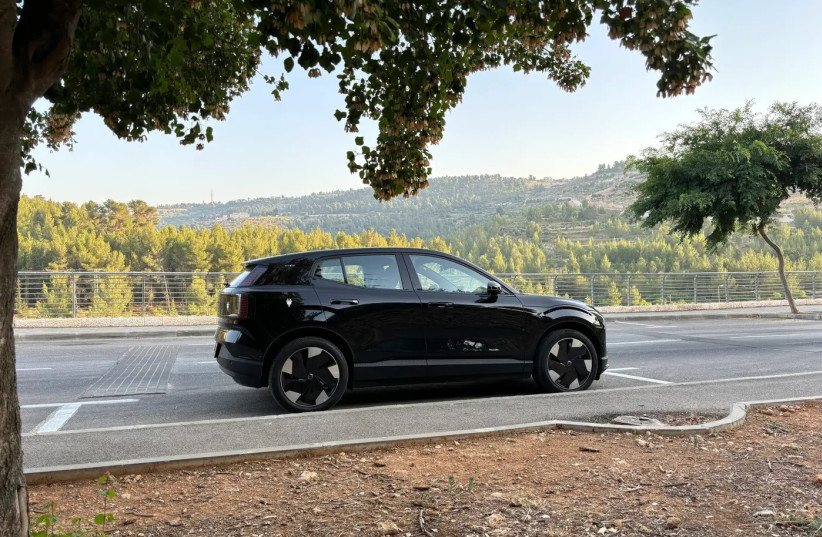Price (base/tested): NIS 230,000
Competitors: Smart 1, Zieekr X, Lexus LBX, Audi Q2
Liked: Drive unit, range, design, slow charging at 22 kW
Disliked: Operation, rear space, city comfort, price
Rating: 7.5/10
The Volvo EX30 is one of the important cars of the Swedish manufacturer. The small crossover has entered a small market not only in dimensions but also in the number of competitors. Until its arrival, one did not need more than one hand to count the number of competitors in the small urban crossover category: Audi Q2, DS3, Lexus LBX, and that's it. If you were thinking about the Mini Countryman or Lexus UX, they belong to a higher category.
And in a category where there were barely 3 cars, and one of them is nearing retirement, the Volvo is a breath of fresh air. But it is not alone, because on the Volvo platform, coming from the parent company Geely, two additional cars are sitting: Smart #1 and Zeekr X. Correct, the latter may not be considered "luxury" but that is a subjective matter.
The bottom line is that the trio of Chinese / Swedish / German models has essentially changed the game and made the category constantly relevant. At the moment, by the way, Volvo is also produced in China, but due to the European Union's intention to impose high tariffs on Chinese electric vehicles, production for Europe and Israel is expected to move to Belgium in the coming year.
Joy from rapid growth does not mean there are no challenges. Three cars on the same platform require a bit more creative thinking about the uniqueness of each one. Each of the manufacturers has veered slightly in a different direction, but it seems like Volvo's choices have placed it in a somewhat confusing but very interesting place. A sort of identity struggle is taking place between the Chinese mom and the Swedish dad. Let's explain.
Design: In Volvo, they had to find a way to distinguish their car from the other two, and it seems that the solution was something in the style of 'less is more,' with a wheelbase shortened by 10 cm. Yes, the Volvo is the small one in the group, but not necessarily the cheapest. The numbers: 4.23 meters in length, 1.84 meters in width, 1.55 meters in height, and a wheelbase of 2.65 meters.
At first glance from the outside, you might not notice. Despite the significantly shorter wheelbase, its length differences from the small Smart are less than 4 cm. But the dimensions don't catch the eye like the design. And here, there's no room for complaints. Something about the proportions of the EX30 works great. Even in the black color of the test car, which conceals the curves and forgoes the variety of a different color for the roof, the small Volvo looks sophisticated and elegant compared to the other two companies on the platform.
It feels dynamic, light, and material compared to her two sisters, a touch of luxury comes thanks to the neat and smart arrangement of the LED lights on the front and rear. From the side, it doesn't feel like a leisure car, at maximum a crossover, but with the help of large rims and vehicles in a color other than black, even a slightly dusty lower part that gives a muscular feeling and an elegant connection in the C pillar (the rear pillar) between the roofline and the body of the car.
Another very dear touch is the way the lights ignite from the front and back. Behind, the animation of the lights resembles a charging battery.
Passenger compartment: entering the Volvo's interior begins to float. The clean and minimalist Nordic design feels luxurious at first glance. The passenger compartment offers horizontal lines. A horizontal multimedia screen in the center console sharpens the surrounding design cleanliness and attracts attention. The EX30 minimizes the interface between passengers and the Volvo. Almost all functions are concentrated in the touch screen (12.3 inches) in the center of the car. The only buttons are on the console between the seats, responsible for opening windows and locking the vehicle. That's it.
On the steering wheel and behind it is a similar situation. Several buttons on the steering wheel itself, a right handle behind it for changing gears and operating the lights. A left handle for wipers and signals. Everything else is on the screen. And the screen, how should we put it, challenging. On one hand, it seems that whoever designed it spent too many hours in a Tesla because the overall layout, icons, and colors are largely reminiscent of the American manufacturer. On the other hand, the screen itself is small, so most functions are crammed next to each other.
In contrast to the large screen in a Tesla that allows for splitting functions, in the EX30, opening one function will cause most other functions, like navigation for example, to disappear. Want to bring back navigation on the screen? Just add a few more clicks. Dealing with the screen consumes time and attention. The icons are small, there are plenty of menus and submenus, and only a few general control screens help simplify operation.
And if you're wondering why we didn't explain about the dashboard, that's exactly the problem. There's no explanation because there is no dashboard or screen or anything else that will provide you with information about the car's status. All driving data is concentrated in the top part of the small multimedia screen.
It can be frustrating because every time you look at the gauges, which are on the central screen and not in front of you, the gaze detection system will alert you that you're not looking at the road. Who came up with the idea of putting the speedometer on the side and then alerting when trying to look at it?
At some point, we started wondering what led to the development of the EX30, brilliant designers offering a stunning but not practical or simple passenger compartment. This is also reflected in the materials. Most of them are good, but there are some that don't work at the high level of premium cars.
The front space in the smallest Volvo is not bad. It is even quite successful. True, the floor is a bit high but not unusually so, and it is quite easy to find a comfortable seating position. The seats are soft but supportive, the front seats have power adjustment, and there is also ample headroom for taller individuals.
With a wheelbase similar to that of a Volkswagen Golf, the spacious rear of the EX30 is supposed to be good as well. But entering the rear seat clarifies that this is not the case. The main problem is the battery under the floor. In order to maintain a reasonable headroom, the seat is very low. Thigh support is limited and the legs search for a place under the front seat. Overall, the rear space will be good for children, but adults will enjoy the experience less.
Performance: And then we get to the highlight - the propulsion unit, which is simply excellent. The small car does not weigh a lot considering that it is an electric car, only 1,850 kilograms heavy, but less. On it, someone put 272 horsepower that drive the rear wheels and primarily 35 kgm that will always be available. Thus, the cheap and small Volvo jumps to 100 km/h in just 5.3 seconds, and this is not the fastest version: with dual propulsion, this figure drops to 3.6 fantastic seconds.
The excellent performance is maintained even as the speed climbs and the EX30 will continue to accelerate confidently even when you exceed the usual speeds on Highway 6. Its performance is better than that of competitors, including its two sisters from the same manufacturer. But it's not just about performance, it's also about range.
Range and charging: With 69 kWh, the battery of the Volvo in this version is not small. Although the "net" is somewhat reduced and still in our test, which included quite a few urban and higher-speed urban roads, it provided an electricity consumption of 16-17.5 kWh per 100 km. This simple calculation places its actual range at 400-420 km. The data may be far from the 471 km that the navigation system promised, but they will definitely satisfy those who buy an electric car in this price range and allow them to travel efficiently.
At the end, the impressive charging capability is also added. The peak charging power stands at 153 kilowatts, impressive in relation to the battery dimensions, and the truly good news is the AC charging of the tested Ultra version that stands at 22 kilowatts, twice the usual. These data allow charging the battery fully at a relatively good price and speed. Imagine a fully charged battery by the time it takes you to shop at the mall. In this case, you gain twice - a charged battery and a price that will disappear in the total of your mall purchases.
Riding Comfort: Like many things in the small Volvo, comfort is also not the same everywhere and not necessarily consistent. In the city, it is too busy. The suspension supposed to handle the high weight is stiff, but the shock absorbers do not react in the same way, meaning within the city many bumps are transferred to the passengers' compartment, but the subsequent cushioning is not necessarily successful, and the Volvo sways on its suspension more than desired.
The moment you leave the city, the feelings change rapidly, here the comfort is good with excellent body support and mature absorption. In fact, it can be said that Volvo loves to travel between cities and less within them. The ability to filter noises is not bad, especially in wind sections. Road noise insulation depends heavily on the type of road you are traveling on.
Road Behavior: This Volvo's behavior is good for its type. As mentioned, the EX30 is relatively light for electric cars. It also has rear-wheel drive and a fairly short wheelbase. All these, alongside the stiff suspensions, give the Volvo successful road behavior.
This is not a sports car, despite the rear-wheel drive, so there's no need to expect enjoyable drives on Jerusalem's hilly roads. However, there is a strong grip, precise steering to a satisfying degree, decent responses to weight transfer forward and backward, and relatively gentle handling compared to other cars of its kind.
Like many electric cars, here too there is a "one-pedal driving" system that provides adequate strong braking. It's a shame that even activating the system is done through an internal menu and not easily accessible, especially while driving.
Bottom line: The Volvo EX30 presents an excellent and frustrating package as one, primarily struggling to clarify what exactly it wants to be. Although its wheelbase has been significantly shortened, it's not short enough compared to its competitors to make it a desirable urban choice. It's also not particularly comfortable in the city. On the other hand, outside the city, it stands out with a successful range, comfort, proper behavior, an overall decent experience.
It continues to confuse with a well-equipped and designed passenger compartment, but with cumbersome operation and a feeling of cost-cutting reflected in the scarcity of buttons and their concentration on the central console. And after all that, there's also the price issue.
Volvo announced that it would be affordable, they just forgot to mention that it would only be cheap (from NIS 180,000) in the Core version with the small battery and modest equipment. In the mentioned version, it's slightly cheaper than the long-range versions of the competitors from Smart and ZeeKer. When comparing identical versions, like in the test car, the Volvo may be smaller but it's more expensive and sometimes significantly so.
This is how a wonderful car is received in certain places but less profitable and successful in many other places. The choice of a Volvo will not come from rational places, it will probably be the result of a connection to the brand or an excessive fondness for design.
Volvo EX30 Ultra: On the technical side
Engine: Electric, 272 hp, 35 kg/m
Transmission: Auto, direct transmission, rear-wheel drive
Electricity:
Battery capacity (kWh): 69
Slow charge (kW): 22
Fast charge (kW): 153
Performance:
0-100 km/h (seconds): 5.3
Maximum speed (km/h): 180
Driving range (manufacturer, km): 470
Driving range (test, km): 400-420
Dimensions:
Length (m): 4.23
Width (m): 1.84
Height (m): 1.55
Wheelbase (m): 2.65
Cargo volume (liters): 318
Weight (kg): 1,805
Tires: 245/45R19
Safety:
European Crash Test Rating: 5 out of 5 stars
Active Safety: Autonomous emergency braking for front and rear driving, adaptive cruise control, lane-keeping, alert for vehicles in blind spots, automatic high beams, lane departure warning. Missing: child reminder alert and driver distraction alert
Warranty:
3 years or 100,000 km on the vehicle, 8 years or 160,000 km on the battery

